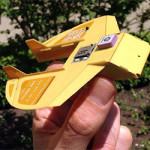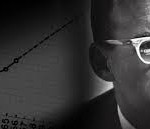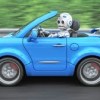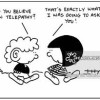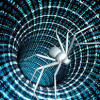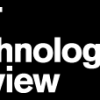article from http://singularityhub.com/
“When I was in elementary school, about 50 years ago, teachers used to stand in front of a class of 40 or 50 children and write on a blackboard with chalk. To make sure the material was absorbed, the teacher asked occasional questions and assigned lots of homework. If students discussed their homework or helped each other in tests, it was called cheating, and they were punished.
Today, the blackboard has become a whiteboard; chalk has become a magic marker; the slates that students used have been replaced by notebooks; and classes have sometimes gotten smaller. Little else has changed. True, some schools are providing their students with laptops, and teachers are increasingly using technology and encouraging collaboration. But the methods are essentially the same—with the teacher dictating learning.
What is becoming possible, however, is a revolution in education. I am not talking about the much-hyped Massive Open Online Courses. To me, these are as imaginative as the first TV shows in which radio stars stood in front of a camera with a microphone in hand. I am talking about a complete transformation of the way teaching is done, with the computer taking the role of the lecturer, the teacher becoming a coach, and students taking responsibility for their own learning.
The digital tutor of the future will do knowledge transfer better than a human can. If the student likes reading and lectures, it will teach in a traditional way — through eBooks and videos. If not, it will teach through games, puzzles, and holographic simulations. What better way to learn history, culture, and geography than by being there virtually and experiencing it?
In the future I am talking about, the role of the human teacher is that of guru: to teach values such as integrity, teamwork, respect, caring and commitment; to be a guide and mentor. And students take ownership of their education. This future isn’t as far away as you think. I’ve already seen early signs of it in Silicon Valley.
Esther Wojcicki, who is a teacher at Palo Alto high school, has been pioneering a new method of learning for the past 30 years. She joined the faculty at Palo Alto in 1984 as a teacher of English and journalism. She had a Master of Arts in journalism from UC Berkeley’s Graduate School of Journalism and had worked previously as a reporter. When she arrived, there were 19 students in the journalism program, publishing a bimonthly eight-page newspaper that they created on a typewriter, pasted up with hot wax, and printed using hot-metal typesetting.
In 1987, Wojcicki saw a demo of a Macintosh at a small store in Los Altos and got excited about the possibilities for her classroom. She applied for a grant from the state of California to buy seven Macs and was selected. When the computers arrived, though, she had no idea how to even turn them on. Not having anyone to help her, she turned to her students, admitted that she “had no idea what she was doing,” and asked for their help. Wojcicki says that this was the beginning of a collaborative learning model of teaching that she has since been refining.
Fast forward to 2015, when the country is adopting a pedagogy that focuses on personalization, collaboration, innovation, and creativity. Palo Alto High School has a 25,000-square-foot Media Arts Center, with 600 students who use media to learn critical-thinking skills, communication skills, and tech skills. And by the way, they are also perfecting Common Core State Standards skills. This is a program to teach students to think critically and be prepared for the unknown future; it is not focused on training journalists. The school has six publications: a 28-page full-sized student newspaper, The Campanile; a news magazine,Verde; a sports magazine, Viking; an arts and entertainment magazine, C Magazine; a broadcast television program, InFocus; and a website program,voice.paly.net.
In a new book, in which, with co-author Lance Izumi, she shares her experiences, Wojcicki says that Google-style moonshots are necessary to transform education. Wojcicki and Izumi advocate changing the culture of the classroom so that the teacher relinquishes some control of the learning to students and the lessons become more relevant to the real world. Here are some of the key lessons from their book, Moonshots in Education: Launching Blended Learning in the Classroom.
Giving students some control of their learning is the key to engagement. Whilst that sounds simple, in fact it requires a moonshot, because schools of education train teachers to always maintain control, so one of the scariest things for teachers is to give up any control to students. They are worried that they will be evaluated on “loss of control” in their classes, and that the test scores will fall, for which they will be blamed and lose their jobs. They do not want to take a risk.
If we want to train a generation of innovators, then we need to give them an opportunity to be innovative in school. If we want to train a group of people to obey orders and not think for themselves, then we should continue with traditional education. The old model was developed more than a 100 years ago to train workers for the factory.
Students do well in classrooms when they are treated with trust and respect. Everyone, especially a child, wants to feel important and empowered. All classrooms should treat students with kindness, trust, and respect, giving them an opportunity for innovation and collaboration. The culture of the classroom is the key to getting kids excited about learning.
Mastery of learning is also important. Children need an opportunity to redo assignments until they learn the material. Some people take longer than others to learn, but that does not mean that they are inferior or cannot learn. Grades can be an inhibiting factor: students who get a bad grade don’t want to do the assignment again; they get discouraged. But if they just get the corrections, with instructions to revise (the same instructions everyone else gets), they will do the work. They all want to succeed.
This methodology can be used in all subject areas. If students were given as little as 10 percent of the time to work on a project of their choosing, they would be more excited about learning the subject matter. Wojcicki says that 50 percent of the time should be dedicated to blended learning.
The digital tutor I described is probably five or 10 years away, but it is coming. In the meantime, there is nothing to stop us from adapting education to the modern era of creativity and innovation — and taking advantages of technologies that are already here.”
